Douglas and Fourpeaked VolcanoIn Katmai National Park, NE of the famous Katmai Volcano, spectacular glaciers from Douglas (2140m a.s.l.) and Fourpeaked (2104m a.s.l.) Volcano are close to Cook Inlet. |
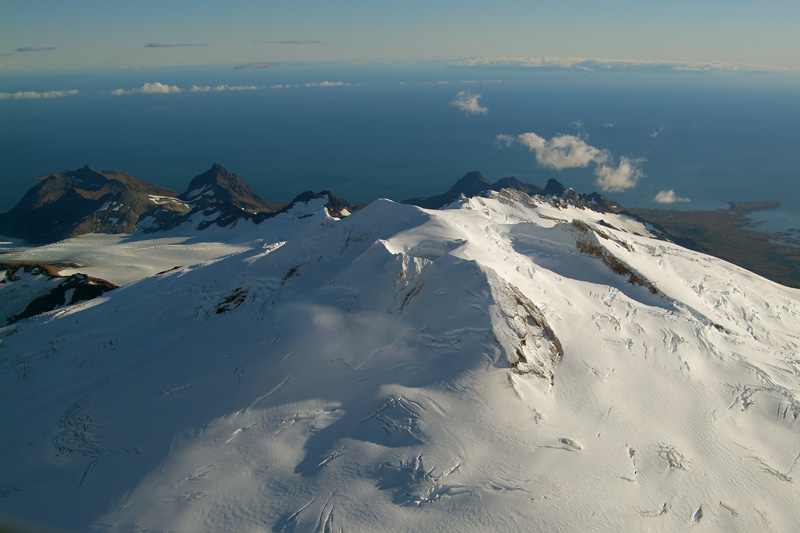 Approaching Douglas volcano from the West: the crater lake at the mountain's summit at center, Cook Inlet in the background. | 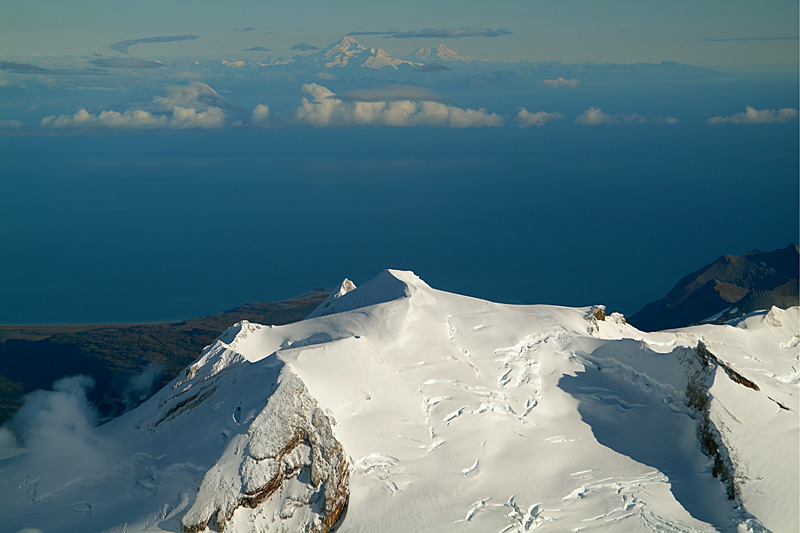 From SW, aligned with the chain of Alaska volcanoes: Douglas in foreground, Augustine (left), Iliamna (center) and Redoubt (center right, far away). | 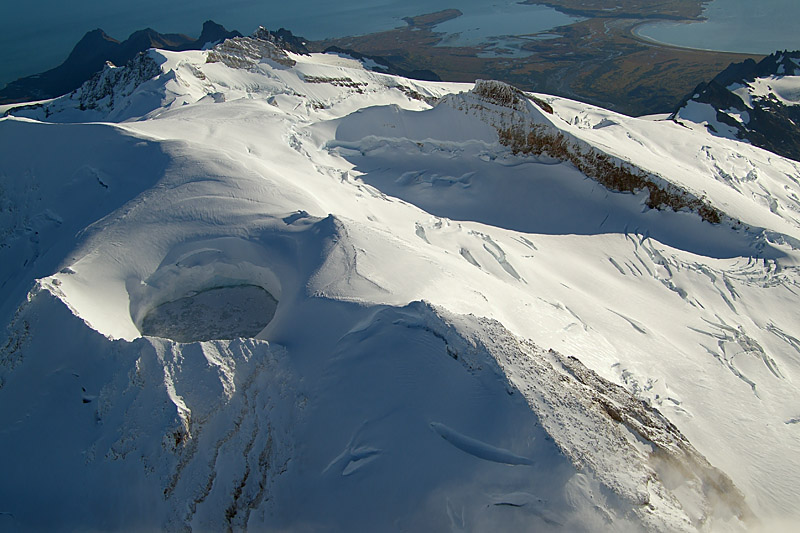 Flying above the summit crater of Douglas: Fumaroles heat the crater lake's water to high temperatures, despite being entirely surrounded by glacier ice. | 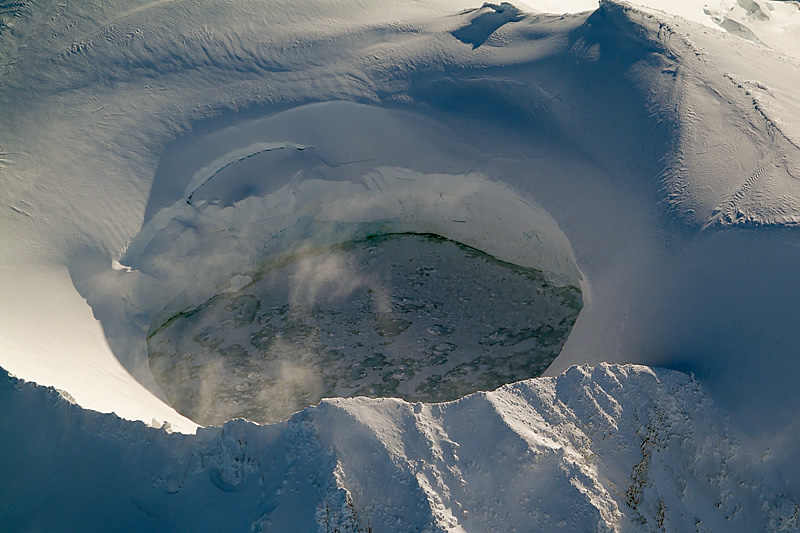 The crater lake is partially covered by small icebergs, which have calved from the surrounding ice cliffs, and a fresh ice crust. Other parts of the lake are open and emit steam. |
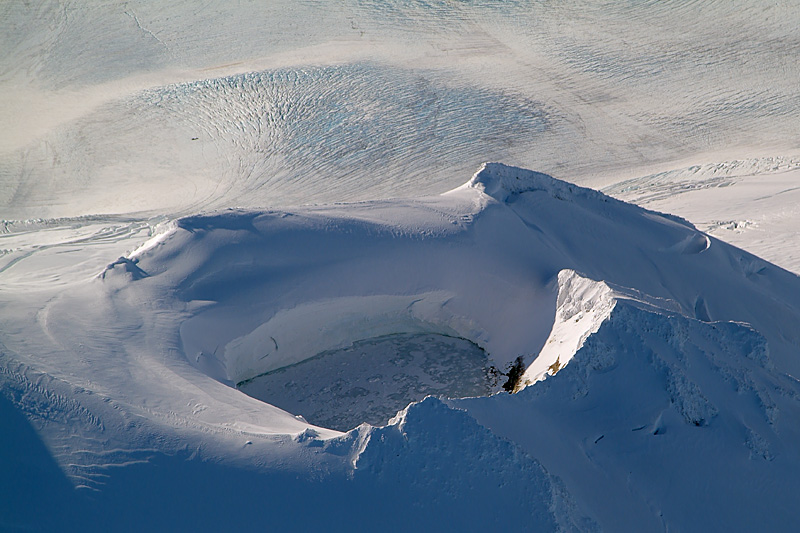 Note a small, ice-free section of Douglas crater on the right; in the background the heavily crevassed accumulation area of Fourpeaked glacier can be seen. | 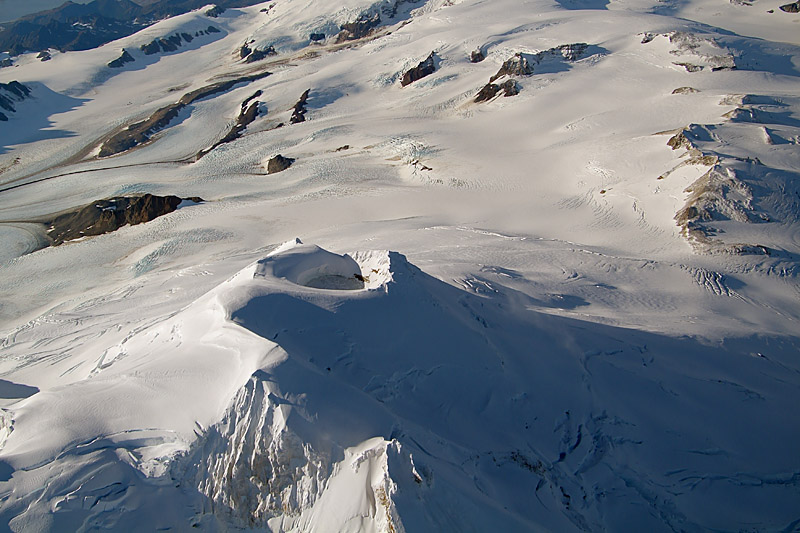 Douglas Volcano from the NE. Note how glaciers from Douglas and some smaller peaks in the background are forming an icecap covering the mountain range. | 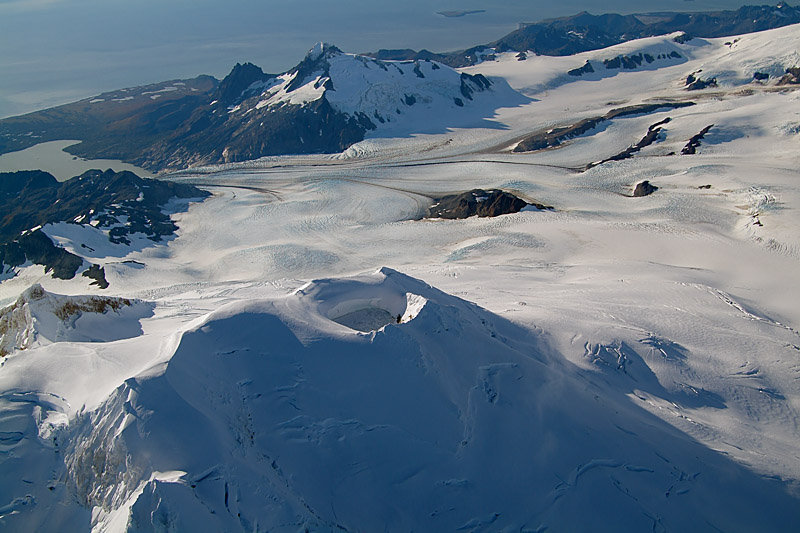 In this view, Fourpeaked Glacier, a major outlet glacier from the icecap descends into a proglacial lake separated from Cook Inlet by terminal moraines. | 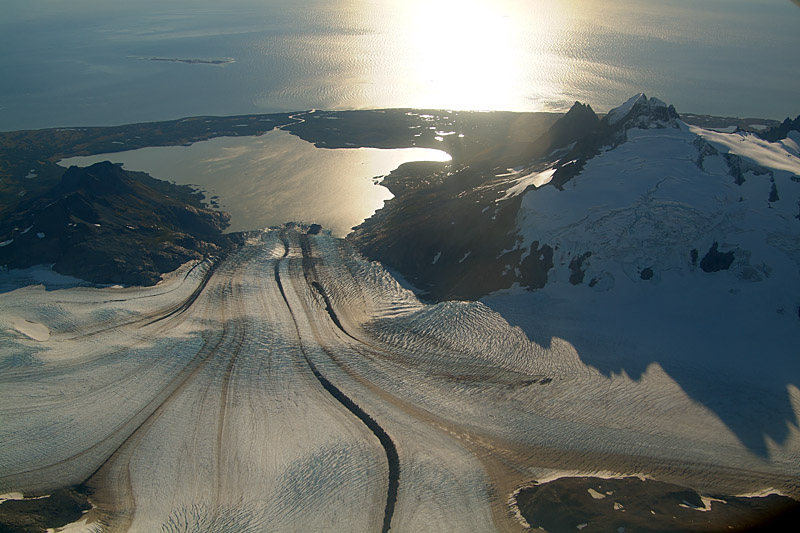 Close-up view of Fourpeaked Glacier's tongue and its proglacial lake; Cook Inlet in the background. |
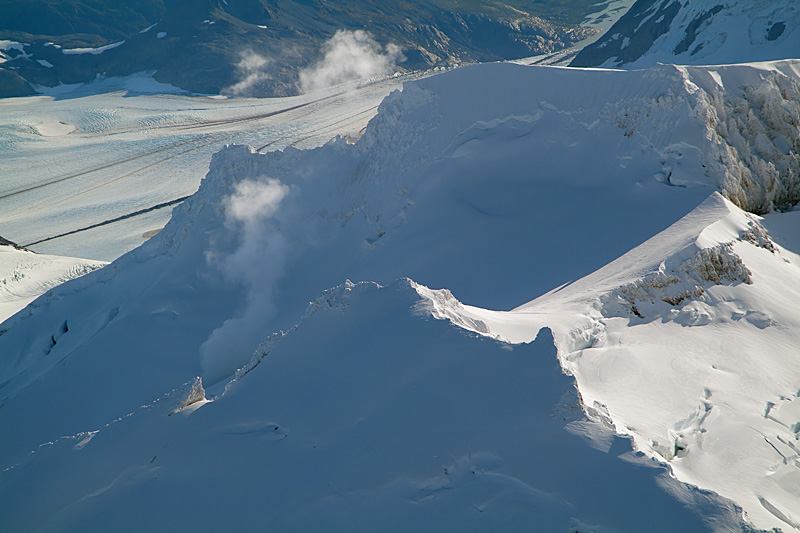 Steam is released from a vent on Fourpeaked Volcano. Fourpeaked Glacier can still be glimpsed in the background. | 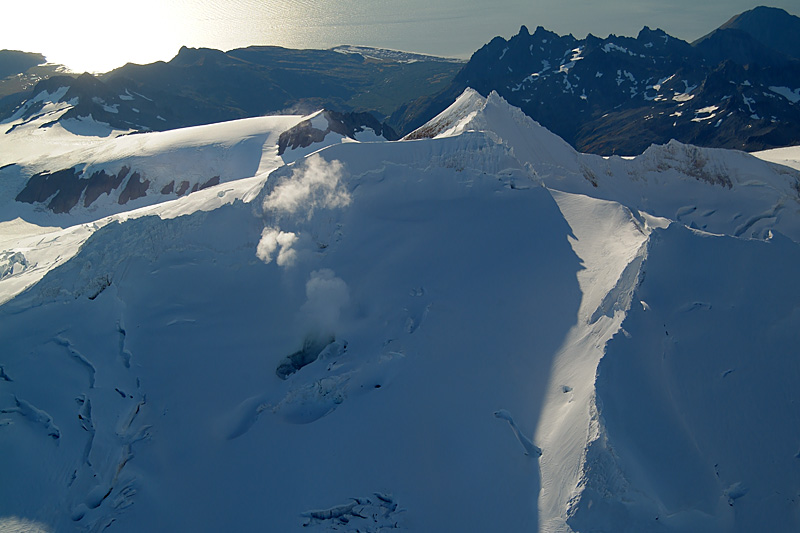 Steam from the active vent of Fourpeaked Volcano has penetrated the glacier ice. However, two older vents from 2006 below the active one have migrated downglacier as a result of the glacier's motion and are now closed. | 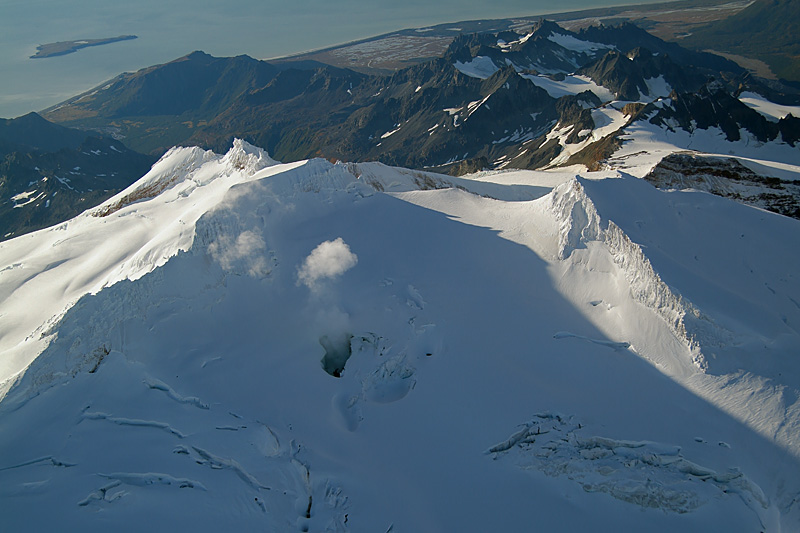 Steam is released irregularly from the vent causing puffs and little clouds. | 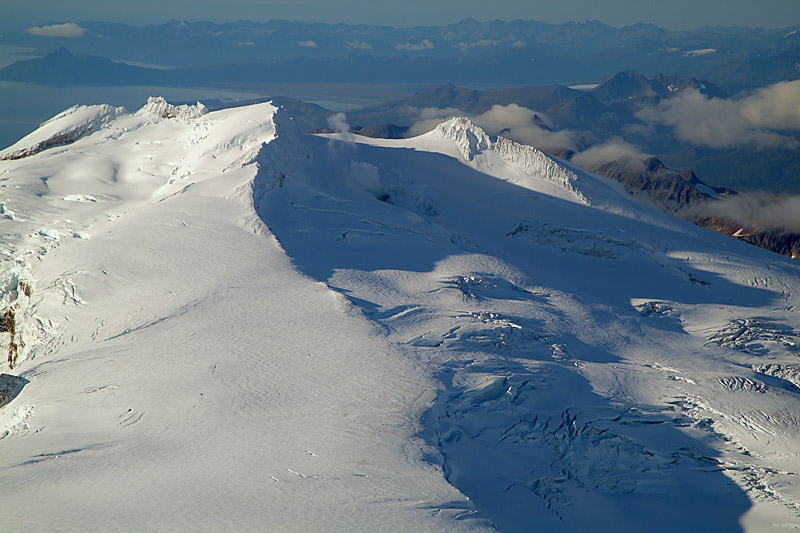 Crossing the aligned chain of Alaskan volcanoes NE of Fourpeaked Volcano. Katmai Volcano is in the far background. |
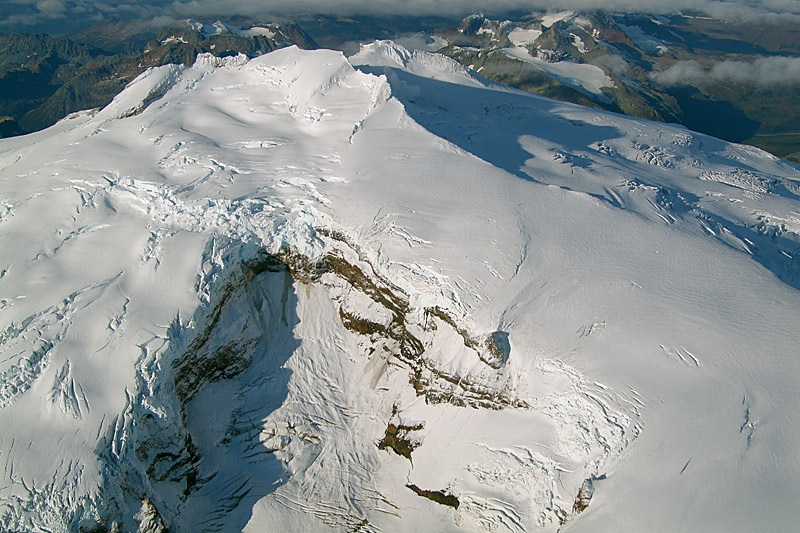 A large depression in the slope of Fourpeaked volcano is either the result of glacial erosion or of a flank collapse and landslide. Note ice avalanches which have descended from the cliff. | 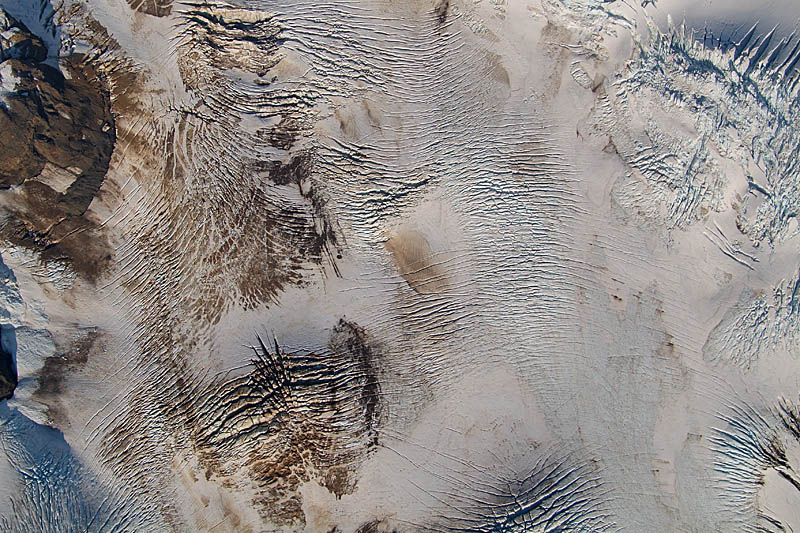 Ice avalanches and, possibly, mudflows have transported debris and deposited it on the lower, flatter part of the glacier. | 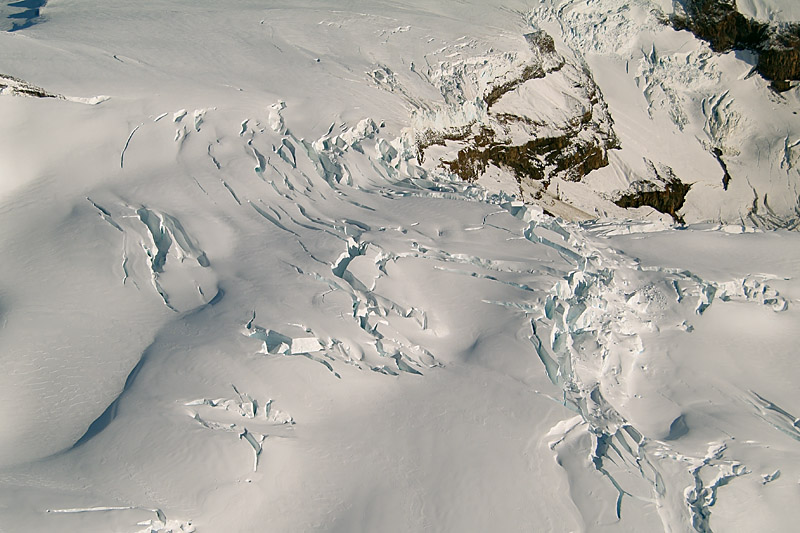 Detail of the glacier just above the ice cliff: wide crevasses are caused by longitudinal strain in the ice. | 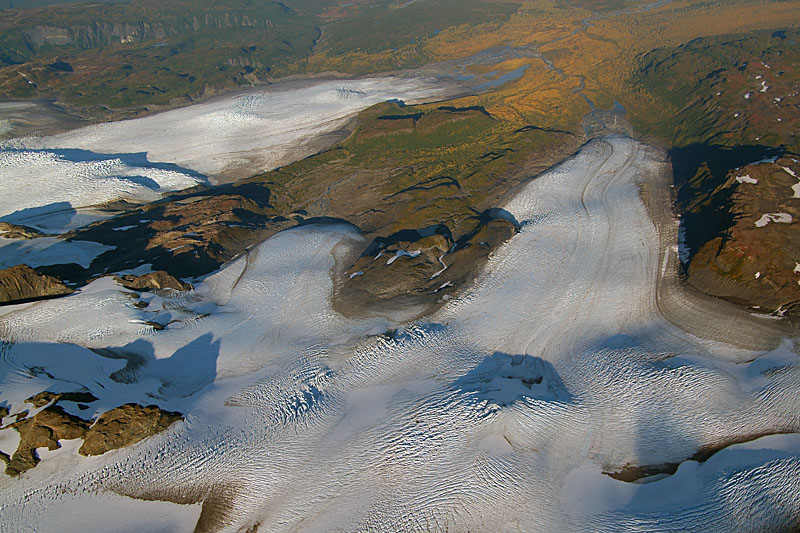 Flying back over the northern slopes of Douglas Volcano, crossing several glacier tongues which reaching far into the inner Alaska lowlands. |
| Photos by Marco Fulle, taken during a three hour charter flight on 27 Sept 2007, starting at 9 am, during a brief pause between storms. The sun was shining from SE; this may help to understand the orientation of the photos. |